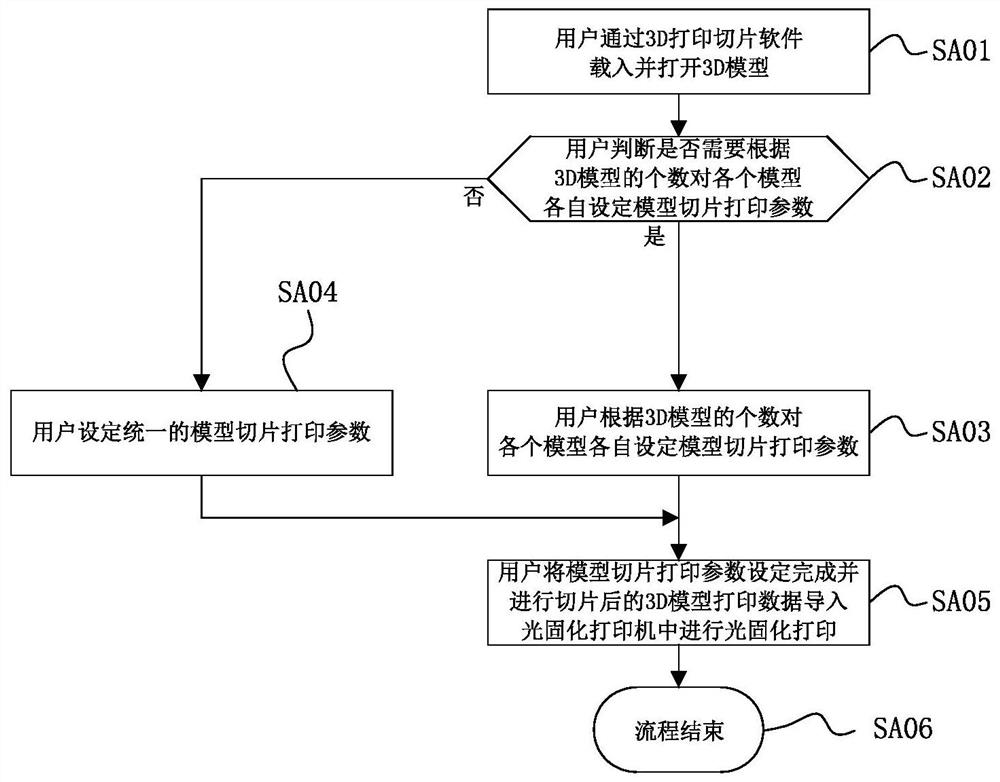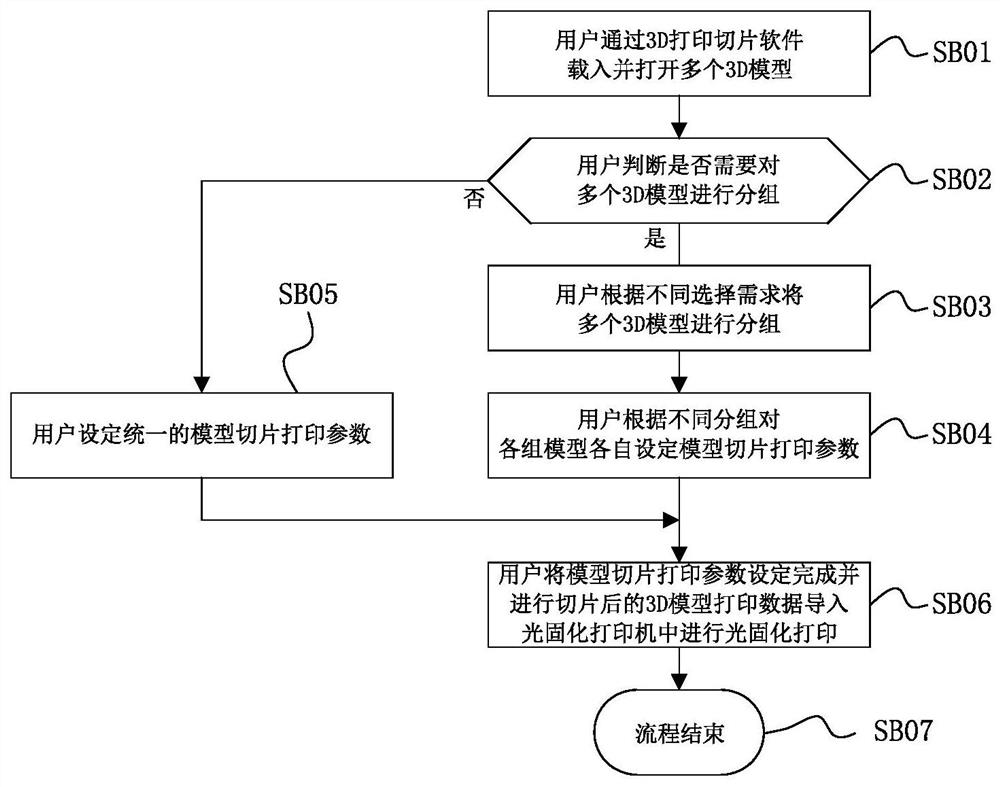Methods for setting multiple sets of slice printing parameters of photocuring 3D printing models
A printing parameter and 3D printing technology, applied in the field of 3D printing, can solve the problems of not being able to see the difference in molding at the same time, long printing time, heavy testing workload, etc., and achieve the effect of delicate appearance details and good effect
- Summary
- Abstract
- Description
- Claims
- Application Information
AI Technical Summary
Problems solved by technology
Method used
Image
Examples
Embodiment Construction
[0057] The embodiments of the present invention will be further described below with reference to the accompanying drawings.
[0058] The invention provides four methods for setting multiple sets of slicing printing parameters for light-curing 3D printing models, which can set multiple sets of slicing printing parameters according to different printing requirements or different structural characteristics of the multiple sets of printing models, so that the printing models can be printed within the same period of time. According to different printing parameters, the resin is exposed at different times or the forming platform moves at different speeds, so as to achieve better printing results.
[0059] figure 1 The flow of the method for setting multiple slice printing parameters for the light-curing 3D printing model of the present invention figure 1 . As shown in the figure, it includes the following steps:
[0060] SA01. The user loads and opens the 3D model through the 3D...
PUM
| Property | Measurement | Unit |
|---|---|---|
| thickness | aaaaa | aaaaa |
Abstract
Description
Claims
Application Information
 Login to View More
Login to View More - R&D
- Intellectual Property
- Life Sciences
- Materials
- Tech Scout
- Unparalleled Data Quality
- Higher Quality Content
- 60% Fewer Hallucinations
Browse by: Latest US Patents, China's latest patents, Technical Efficacy Thesaurus, Application Domain, Technology Topic, Popular Technical Reports.
© 2025 PatSnap. All rights reserved.Legal|Privacy policy|Modern Slavery Act Transparency Statement|Sitemap|About US| Contact US: help@patsnap.com



